There can be your advertisement
300x150
5 Ways to Hide Linoleum Seams + Expert Comments
In today's world, you can find an answer to any question in just a few seconds — all you need to do is type it into an online search engine. We also decided to turn to online advice and figure out how to hide linoleum seams in an apartment by yourself. For this, we turned to expert Matvey Tyupich — technical director of the interior service Tim & Team.
Here are five of the most interesting recommendations from the web.
Method 1: Using adhesive
On the Internet:
Users consider hiding seams with adhesive to be the fastest and simplest method. At the same time, they note that complete seam sealing cannot be expected from this approach.
In Real Life:
In reality, linoleum seams cannot be masked with adhesive. Moreover, they must first be aligned and then the linoleum sheets must be rolled with a steel roller during the gluing process to the base. Since this method requires professional skills and tools, it is not suitable for everyone.
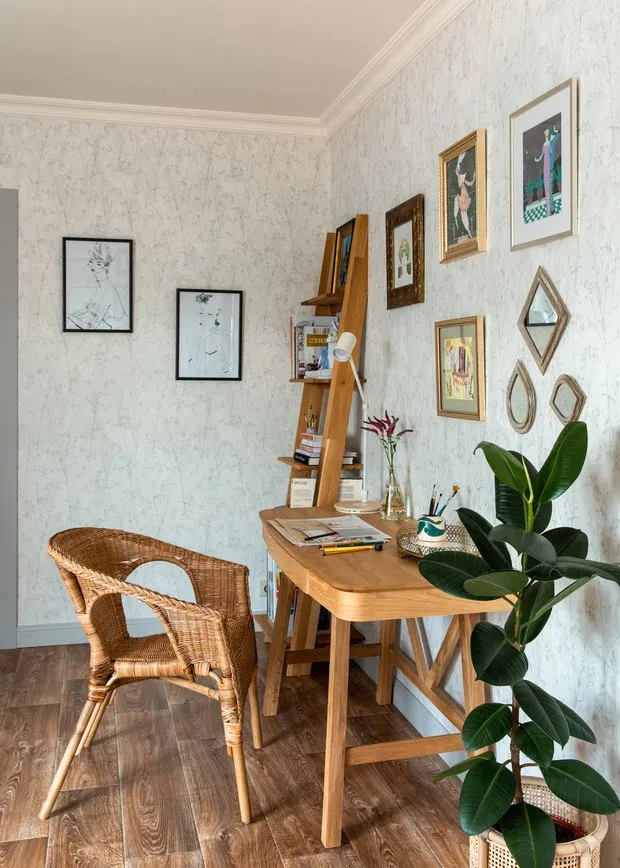 Design: Julia Antonova
Design: Julia AntonovaMethod 2: Using "Cold Welding"
On the Internet:
Some people suggest applying a special "Cold Weld" compound to the seam.
In Real Life:
This is sound advice, but there's a catch. To weld properly, the pattern must be precisely matched and the compound carefully distributed along the entire edge of the linoleum.
 Design: Julia Beliaeva
Design: Julia BeliaevaMethod 3: Using a special PVC cord and heat gun
On the Internet:
According to one of the variants, under high temperature, the cord melts and fills the seam so that it becomes completely invisible. It is also noted that this method is hard to implement at home — only professionals can do it.
In Real Life:
Using a heat cord is limited to commercial coverings, since residential linoleum can deform under the temperature of 275 degrees Celsius.
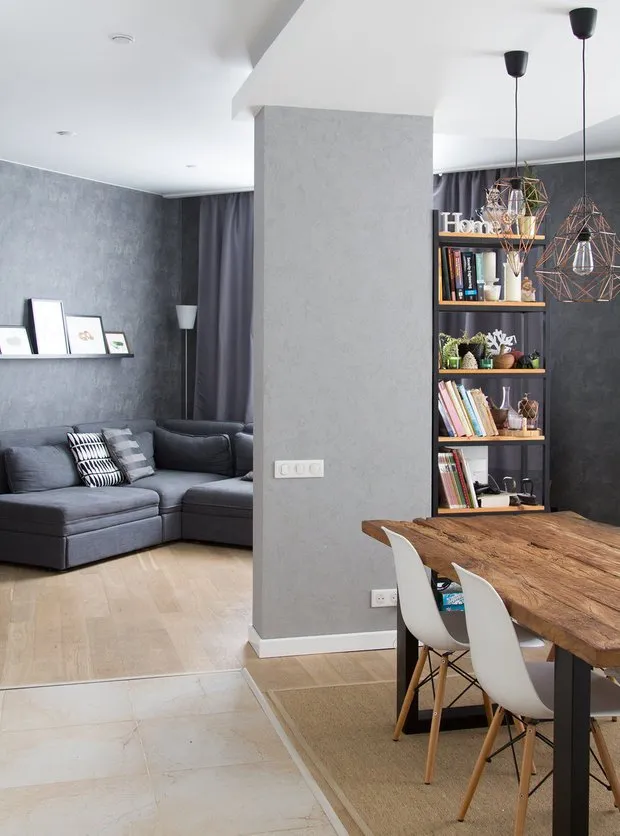 Design: Anna and Dmitry Ulich
Design: Anna and Dmitry UlichMethod 4: Using a threshold transition piece
On the Internet:
A threshold transition is mentioned as a popular material for hiding joints, including linoleum seams. It is important to choose the color similar to the floor covering.
In Real Life:
Unfortunately, this method only works temporarily. Over time, linoleum will shrink due to heating, sunlight, or underfloor heating and eventually pop out from under the threshold.
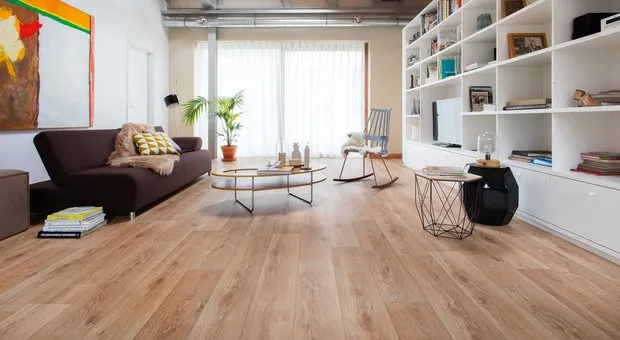
Method 5: Using double-sided tape
On the Internet:
Another quick method of fixing linoleum seams is to cover them with double-sided tape. However, after some time, the seams will still start to protrude, so such a maneuver is only suitable for cottages and temporary apartments.
In Real Life:
This information is fundamentally incorrect. Double-sided tape made from fabric is used exclusively for non-woven semi-commercial linoleum, and the grid size should not exceed 500×500 mm.
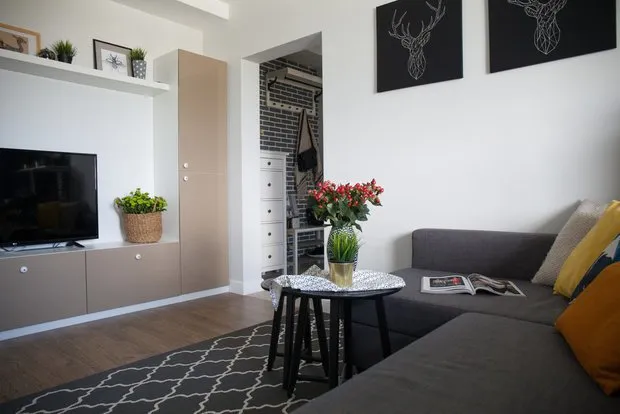 Design: Anna Mozharo
Design: Anna MozharoConclusion
For linoleum, it is best to choose maximum width and avoid joints. If they are unavoidable:
- buy high-quality adhesive and treat seams with “Cold Welding”;
- instead of linoleum, lay down carpet or laminate.
Besides, it is strongly recommended to roll the linoleum sheet into a roll rather than fold it into a folder, otherwise, the floor covering will be permanently deformed.
On the cover: Design by Julia Antonova
More articles:
 Cool Kitchen Tips for a Хрущевка That Everyone Can Replicate
Cool Kitchen Tips for a Хрущевка That Everyone Can Replicate 6 Frustrating Mistakes During Renovation You Will Never Make Again
6 Frustrating Mistakes During Renovation You Will Never Make Again How an Ordinary Khrushchyovka Became a Cool Loft Studio
How an Ordinary Khrushchyovka Became a Cool Loft Studio How to Avoid Mistakes in Renovation: 10 Commandments from a Designer
How to Avoid Mistakes in Renovation: 10 Commandments from a Designer 5 flaws in the foyer that can be fixed over the weekend
5 flaws in the foyer that can be fixed over the weekend Collection with Character: 10 Brutal Interiors by Designers
Collection with Character: 10 Brutal Interiors by Designers Main Trends in Window Decoration for 2022
Main Trends in Window Decoration for 2022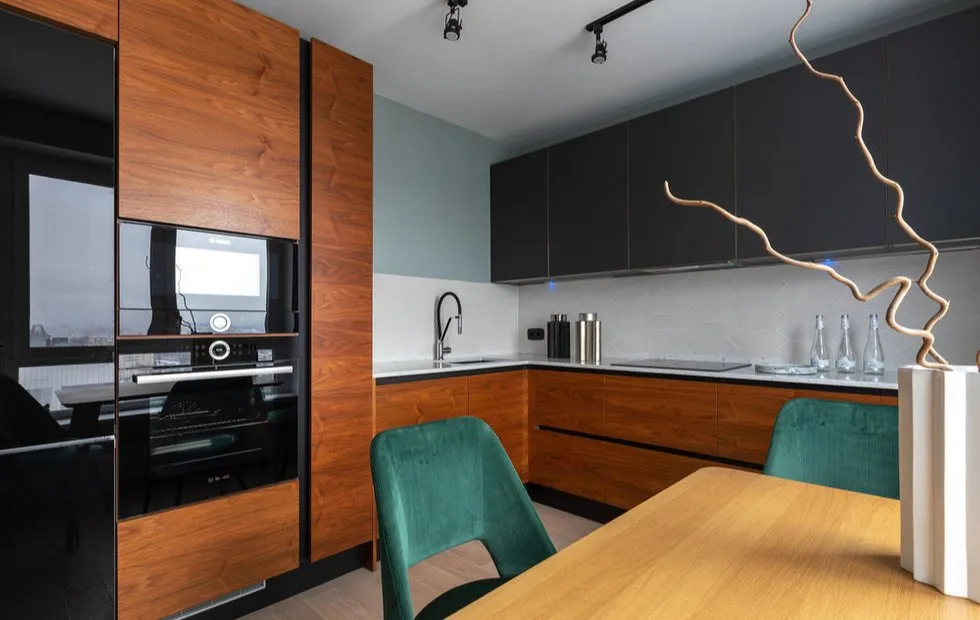 Top 10 Coolest Kitchens of 2021
Top 10 Coolest Kitchens of 2021